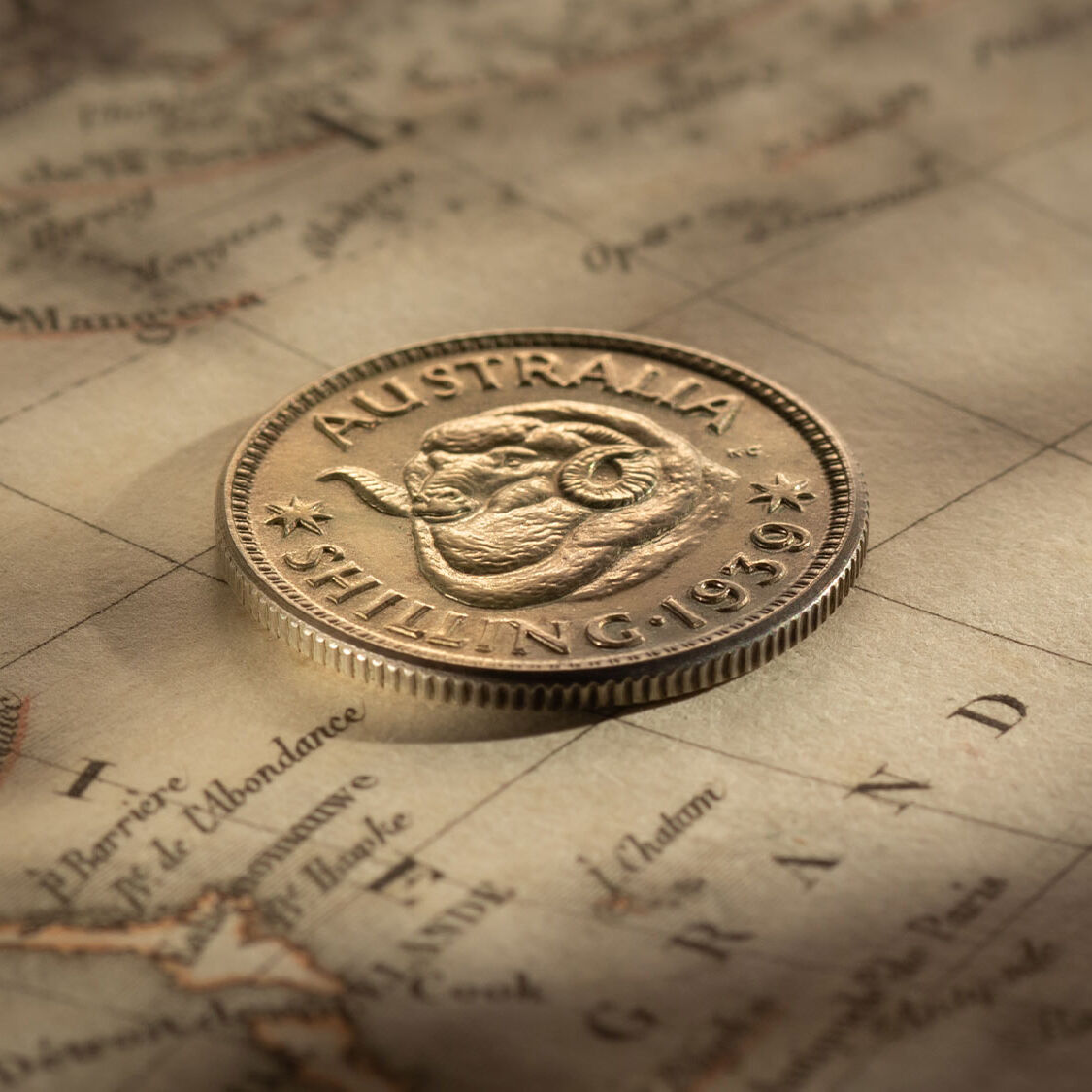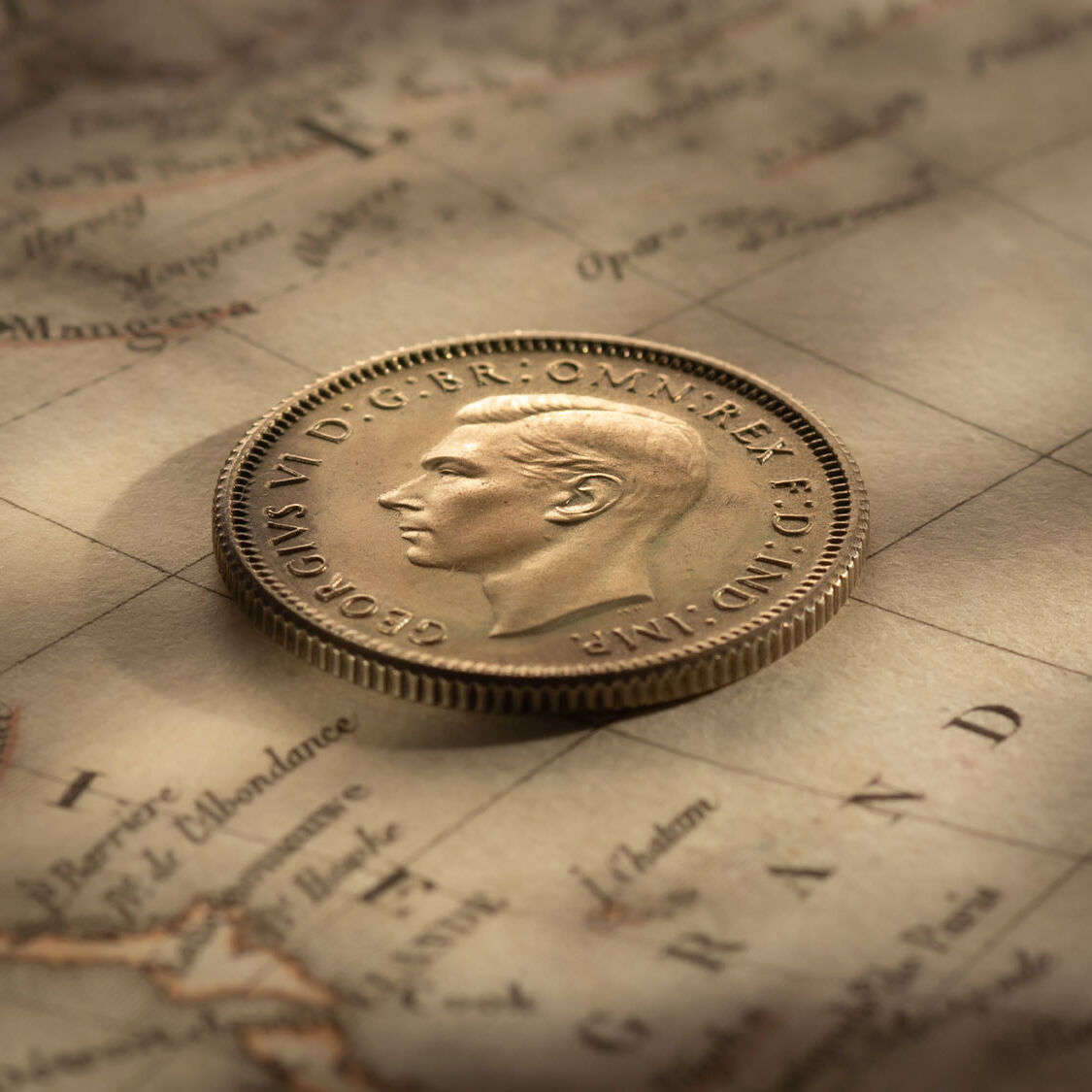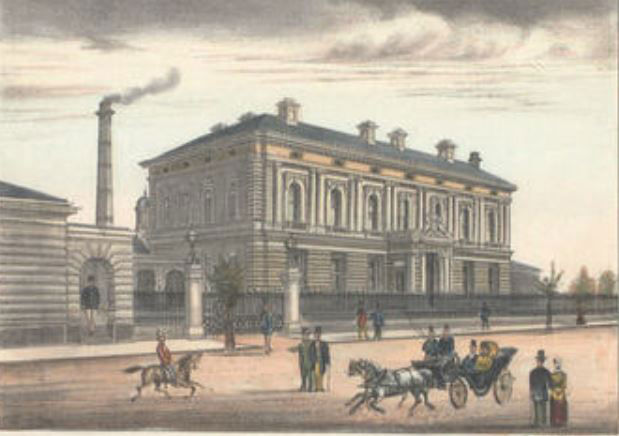Unique 1939 Proof Shilling struck as a Coin of Record at the Melbourne Mint


The owner of the Madrid Collection of Australian Rare Coins was a collector for more than thirty years, with great knowledge of the nation's proof coinage.
While he was in part driven by emotions seeking out his birth year when he acquired this 1939 Proof Shilling, he was astute and recognised the investment potential that a unique coin holds.
He was also aware of the extreme rarity of this sector of the market, that the availability of a Coin of Record out of this George VI era, particularly one struck in silver, was an opportunity not to be passed on.
The year 1939 was a turning point in Australia’s proof coining history. And for the Melbourne Mint.
World War II commenced late in the year (September) and the mint’s priorities took a drastic U-turn, allocating its resources to supporting the war effort.
During 1939, the mint’s proof coin production, both proofs struck for collectors and proofs struck as Coins of Record and retained in the mint’s archives, were modest.
Forty halfpennies were minted to sell to collectors, believed to fulfill an order placed by dealer Henry George Williams.
Only a handful of pennies and even less of the shillings (this 1939 Proof Shilling but one of them), were struck as Coins of Record to store in archives.

Proof coining at the Melbourne Mint ‘fell off a cliff’ from 1939 onwards, the war taking its toll.
The mint ceased striking proofs to sell to collectors. (A resumption of commercial proof coining did not occur until 1955.)
Even proofs that were to be retained within minting circles were curtailed. Coins of Record of the nation's silver coins were not struck in 1940, 1941, 1942, 1943 and 1944.
During the mid 1940s the Government faced a new challenge from rapidly escalating silver prices. As a nation still striking its coins in sterling silver, the impact was enormous. The Melbourne Mint became heavily involved in experimenting with new metals for Government and production of Coins of Record was minimal.
In 1945 records at the Melbourne Mint reveal that two proof examples of the 1945 Florin and 1945 Shilling were retained as the last silver florins and shillings struck in sterling silver. There are none in private hands.
In 1946 the Melbourne Mint struck four pattern florins in cupro-nickel, experimenting with new alloys. One of the '46 florins is now in private hands. It was offered at Spink Auctions in 1988 and is now held with a Coinworks client.
A decision was finally made in 1946 to strike all of Australia's circulating currency in a reduced silver quarternary alloy of 50% silver, 40% copper, 5% nickel, 5% zinc.
Proofs were struck in 1947, in the new alloy. Two examples of the Proof 1947 Florin are held in private hands and one of the threepence.
The next Coin of Record of the nation's silver currency was produced seven years later in 1954, under a new monarch, Queen Elizabeth II.
This 1939 Proof Shilling was not struck for collectors as part of any mass-marketing sales campaign. The coin was struck for the mint's archives and the privileged few. Because it was a specially arranged striking of presentation pieces, only a handful were struck. Technically, we refer to it as a 'Coin of Record'.
The term, COIN OF RECORD, is to a large extent self-explanatory. It is a coin that has been minted to put on record a date. Or to record a design.
What is not self-explanatory is that Coins of Record were struck to PROOF quality as presentation pieces. And were struck in the most minute numbers satisfying the requirements of the mint rather than the wants of collectors.
Forget the notion of striking ten thousand proofs as collectors are accustomed to today. Let's talk about striking a total of ten coins ... or in the case of this coin a lot less!
For today’s collectors the Coins of Record offer a wonderful link to the past and are extremely rare, two reasons that make them so popular.
There was no commercial angle in the production of Coins of Record. The mints were not out to make money from the exercise. Quite the reverse, striking a proof coin in our pre-decimal era was a very labour intensive (and hence costly) exercise that would have dented the mints annual budget quite considerably. The prime reason why so few coins were struck.
In the striking of a proof coin, the mint’s intention was to create a single masterpiece, coining perfection. Perfection in the dies. Wire brushed so that they are razor sharp. Perfection in the design, highly detailed, expertly crafted. Perfection in the fields, achieved by hand selecting unblemished blanks, polished to create a mirror shine. Perfection in the edges to encase the design … exactly what a ‘picture frame does to a canvass’.
A proof is an artistic interpretation of a coin that was intended for circulation. A proof coin is meant to be impactful, have the ‘wow’ factor and exhibit qualities that are clearly visible to the naked eye. A proof coin was never intended to be used in every-day use, tucked away in a purse. Or popped into a pocket.
So, what happened to these Coins of Record? Where did they go? And if they were struck by the mints for their own use, how did they get into collector's hands?
In the main, Coins of Record ended up in the mint’s own archives, preserving its history for future generations. Any coins that were surplus to requirements may also have been sent to a museum or public institution.
Coins of Record were also put on display at public Exhibitions. The two known examples of the Proof 1866 Sovereign and Proof 1866 Half Sovereign were especially struck to exhibit as ‘products of New South Wales’ as part of the Colonial Mints display at the International Colonial Exhibition of 1866 and the International Exposition in Paris, 1867. They were discovered in London in the early 1970s.
It is noted that many of the overseas mints have over time sold off Coins of Record that they considered excess to their requirements allowing them to come into collector's hands. The Royal Mint South Africa sold off several Australian gold proofs in the 1990s.
It is also noted that influential collectors, and those that moved in the same circles as the Deputy Master, did occasionally receive a proof coin. Most likely in exchange for a coin of the same face value, so that the mint's 'books' would be balanced.
© Copyright: Coinworks
